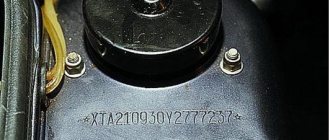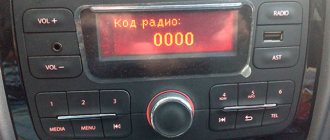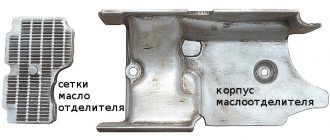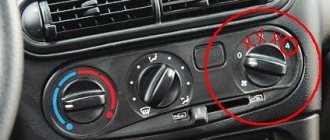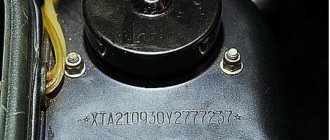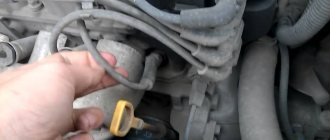What is a short circuit? Its consequences
Short circuit occurs in sockets, plugs, junction boxes and other places where there is a connection of wires. The reason for everything is poor quality contact. It leads to an increase in load and, as a result, to heating. Most often, the result is burnout of the insulation, as a result of which the supply wires become short-circuited with each other.
A short circuit is very dangerous for humans and in most cases causes a fire. In this regard, it is necessary to determine its location quite quickly.
In order to prevent short circuits, it is necessary to periodically test the power cable lines with voltage, which will avoid serious consequences.
Short circuit, methods for finding it
Consider the case where your fuse blows. There are several types of short circuit, in the first case your fuse burns out instantly, immediately after its installation in the fuse block or during a short period, in a matter of moments after installation, but not instantly. This means that in the first case, the conductor through which it goes “plus” has direct direct contact with the “ground” of the car body, this option is a little easier in troubleshooting. It is always more difficult to identify the cause of a malfunction when it is weak or spontaneous in nature, with a tendency to appear and disappear.
When searching for a short circuit, the most important thing is to determine in which part of the circuit the short circuit occurs. When searching, I recommend that you arm yourself with a test light, a long piece of wire, a book or an electrical diagram of the electrical equipment of your car. If your fuse blows, then the short circuit is located in the section of the circuit from the fuse block to the device that is powered by this fuse.
I wrote “if possible” because not all electricity consumers are easily accessible, and many are located in places where this procedure can only be performed by a specialist or a person who has already encountered this. For example: if you determine that you have a short circuit in the direction indicator or hazard warning circuit of a VAZ 2105 car, you will need to disconnect the plug from the hazard warning switch, which is located on the right side of the steering column; if, when you turn it off and install the fuse, the short circuit disappears, you need go further along the wiring, and the relay for the turn signals and hazard warning lights is located under the dashboard, which I do not advise you to remove alone if you have not had such experience.
Above, I advised you to use a test light and a piece of wire when searching, now I’ll explain why. How we defined a short circuit is when the wiring or some part of the device connects or has contact with the ground of the car, we make a circuit by connecting a long wire to the “plus” of the battery and a control light, however, it can just be a control light with one long part. When looking for a short circuit, you must have the battery disconnected, but in this case, you will need to completely disconnect everything from the positive, and the negative ground must be connected to the car.
We connect the second terminal of our test lamp to the fuse block, connect it to the place where this formed minus comes from, since when we insert a fuse, it immediately blows out, which means a minus is formed at one output, and a positive voltage is applied to the second, as expected. When we connect a light bulb to this terminal, in the event of a short circuit, it will immediately light up brightly. Now, according to the scheme, we will turn off all electricity consumers that are powered by this fuse. And we will observe the behavior of the light bulb, how it burns, as soon as we disconnect the device causing the short circuit, the light bulb should either go out or shine dimmer, which will correspond to the fact that we have found the cause of the short circuit.
How to visually detect the source of a short circuit?
If the lights suddenly go out in the house and there is a characteristic smell of melted insulation, the first thing to do is to immediately turn off the power to the facility. After this, view all sockets and connecting contacts. If the latter have been violated, then such insulation will have a brown or black tint. And when you connect the load, the wire will heat up in this place. This malfunction must be corrected immediately before something irreparable happens (for example, a fire).
How to find a broken wiring in a car
If there is a break, the electrical circuit opens. Often the cause of lack of voltage is poor contact in the circuit connector. The block body hides oxidized contacts, so troubleshooting can take a long time. A break may be detected when the pads or wires are swayed.
To find a break in the test, you need to set the multimeter in ohmmeter or continuity mode. The terminals of the device are connected to the ends of the circuit being tested:
- If there is no break, the multimeter will beep (in dial mode) or the resistance will be minimal (in ohmmeter mode).
- If there is a break in the wiring, there will be no sound signal (in dial-up mode), and the resistance will be very high (in ohmmeter mode).
How to determine a short circuit with a multimeter?
In order to determine a fault in the electrical circuit, including the source of the short circuit, you will need a special device - a multimeter. With its help, you need to check the resistance of the circuit by setting it to the appropriate mode. But remember: this is not a measurement of current or voltage, so all work should be done with the power turned off!
If the section of the circuit being tested is not damaged, the device gives a sound signal and displays the value of the measured resistance. Otherwise (if the value is too large or the number “1” is displayed), you must:
- turn off the power;
- disconnect all the wires in the junction box one by one;
- turn off everything from the sockets and unscrew the lamps;
- ring each circuit separately;
- After identifying the short circuit, it is necessary to determine the cause. To do this, you need to ring all the remaining wires one by one.
Before each measurement, it is necessary to check the functionality of the multimeter by short-circuiting its probes with each other.
Engineering has all the necessary tools for high-quality testing of power cable lines, a well-coordinated team of professionals and licenses that give the right to carry out all the necessary tests and measurements. By choosing the ProfEnergia electrical laboratory, you are choosing reliable and high-quality operation of your equipment!
If you want to order testing of power cable lines] or ask a question, call .
Faults occur periodically in electrical networks. Emergency situations lead to failure of devices and equipment, damage to wires in certain areas, fires and fires. In this regard, it is necessary to urgently solve problems such as finding a short circuit or a break in the line. In most cases, automatic protective equipment or fuses are triggered, after which the accident site is searched to eliminate the consequences.
Short circuit in electrical wiring | Electrician in the apartment, repair of household electrical appliances
One of the most serious faults and troubles in the electrical network is a short circuit. If some other breakdown deprives us of the opportunity to use one or another household electrical appliance, then a short circuit in the electrical wiring can lead to the most dire consequences - fire and fire. Therefore, you need to understand what a short circuit is, the reasons for its occurrence and how to deal with this phenomenon in the home electrical network.
Before we begin discussing the causes of a short circuit and how to eliminate it, we need at least a superficial understanding of this negative process in the network and its manifestations.
What is a short circuit in electrical wiring?
First, let's remember what a short circuit is. A short circuit is a connection in electrical wiring of either a phase and a neutral wire, or two phase wires, or a phase wire and a conductive body connected to the ground, or a phase and ground wire. In other words, a short circuit is a connection of conductors with different potentials.
Manifestation of a short circuit in a home network
The main indicator of a short circuit in electrical wiring is the circuit breaker that protects it. It is the machine that protects the wiring from short circuits. Therefore, if a machine suddenly “knocked out” in your apartment or private house, then 50% is a short circuit. We leave the second 50% for network overload (heating of wires).
In order to give the short circuit 100%, we wait some time (so that the wires cool down) and try to cock the circuit breaker lever into the operating position. If a repeated shutdown occurs, then the diagnosis is established - there is a short circuit in the network. All that remains is to find the location of the short circuit and eliminate it.
If we have open electrical wiring in our apartment or house, then turning off the circuit breaker is not necessary. You just hear a pop, the smell of melting insulation appears in the air, the lights go out and electrical appliances turn off.
Causes of short circuit
The result of a short circuit in new electrical wiring can only be an installation error - either mechanical damage to the wires during their installation and fastening, or their incorrect connection in the junction box. Wires that have the same core insulation colors, as well as using a cable from the same manufacturer, will help to avoid an erroneous connection.
In old wiring, the main cause of short circuits is the destruction of the wire insulation due to age or constant humidity (for example, in the kitchen or bathroom). There is only one prevention - timely replacement of outdated wires and cables.
Another cause of short circuit is a faulty household electrical appliance. The easiest way to find such a fault in the electrical wiring is to turn on all the electrical appliances in the apartment one by one and wait for the machine in the electrical panel to “trigger.” The one he passed out on is our “hero”.
Use on your websites and blogs or as a clicker for adsense
It is important to take into account that only circuit breakers with electromagnetic releases are triggered by a short circuit. Therefore, it is necessary to install circuit breakers that have both thermal releases (in case of network overload) and electromagnetic release (in case of short circuit). Almost all circuit breakers on sale have double protection.
How to find a short circuit
If there is a short circuit in your electrical wiring, the lights go out, electrical appliances turn off, the circuit breaker is knocked out, but you do not see the location of the short circuit, then you should start looking for it.
Let's divide the search into several stages:
- unplug all household electrical appliances from the outlets;
- turn off the lighting - turn the switches everywhere to the OFF position;
- We cock the “knocked out” circuit breaker to the ON position:
- we alternately turn on the lighting fixtures, on which the machine turns off, that is the “hero of the occasion”;
- we alternately turn on the electrical appliances on which the machine “knocks out”, it is faulty;
- if everything is turned off, and the circuit breaker trips instantly, when you try to move it to the operating position, the wires in the electrical wiring are shorted.
How to find a short in electrical wiring
Using a circuit breaker, we de-energize all rooms in an apartment or private house. We unplug all electrical appliances from the sockets, turn off all lighting devices.
We take one of the devices - a megohmmeter, a multimeter (electrical tester), a continuity tester (a light bulb with a battery), and a “breaker” (an indicator with a battery). It is best to use either a “breaker” or a multimeter in the short-circuit position (when the probes are connected, the arrow goes off scale).
You divide an apartment or private house into rooms: this is done in distribution boxes that supply power to one or another room. Disconnect the power wires in the distribution box and check the short circuit using instruments. If there is a short circuit in a given room, then the “breaker” indicator and the multimeter needle will go off scale.
In this way, all rooms in an apartment or private house are checked one by one until the exact room where the short circuit occurred in the electrical wiring is found.
Next, in the found room, divide the electrical wiring into sections by disconnecting the wires in the junction boxes (if any). We look for short circuits in areas in the room in the same way using instruments. The section of wiring where the short circuit occurred must be replaced.
After replacing the section with shorted wires, return the circuit breaker to the ON position.
Source: https://elektrikdom.com/index/korotkoe_zamykanie_v_ehlektricheskoj_provodke/0-426
What is a short circuit
In electrical networks, current can move in two ways - long or short. In the first case, this is a normal operating process when the current flows along its prescribed path through the connected load.
The second option involves the creation of a short path in which the phase and neutral wires are in direct contact with each other. At this point there is a sharp drop in resistance and the current tends to get to this point, moving from plus to minus with maximum speed. At the same time, the current strength increases sharply, which leads to all the known unpleasant consequences. It is precisely on these properties of the short circuit that protective measures are built to prevent such situations. The short circuit of the terminals will be the same as the short circuit current of the battery.
Thus, a short circuit is an unplanned electrical connection of different potentials or phases to each other or to ground. This process is accompanied by destructive currents that cause irreversible consequences. This condition occurs for various reasons, mainly due to damaged insulation or mechanical interaction of components where insulation is not provided.
The main types of short circuits that occur in a three-phase network include the following:
- Single-phase - the phase is closed to ground.
- Two-phase - two phases are closed with each other.
- Two-phase to ground - short circuit of two phases to each other and at the same time to the ground.
- Three-phase - all three phases are closed to each other.
In various machines and electrical installations, interturn short circuits may occur when the turns of the rotor or stator windings are closed to each other. In some cases, the winding may short-circuit and contact the metal body of the unit.
Short circuit.
The second fault in the electrical wiring is a short circuit, that is, the connection of a wire with the body is a so-called “short circuit,” or a short circuit (connection) with another wire. The short circuit of two wires to each other is characterized by the simultaneous switching on of several consumers
When searching for such a malfunction, you need to pay attention to melted and chafed areas. This is usually a consequence of a short circuit of the positive wire to the car body and the use of non-standard or low-quality fuses
A blown fuse indicates a short circuit of the positive wire to the car body, a short circuit. To find such a malfunction, you should not replace the fuse with a “nail” and look where the wires start smoking, this is fraught with melting of the wires and shorting them together, and a fire is also possible. Troubleshooting in this case depends on the specific car model, or more precisely, on the method of formation of the harness. In old cars, sources, switching devices and consumers were connected by entire wires, and the supply wire from one fuse connects several consumers at once. These wires were assembled into bundles with rag or plastic insulation. In modern cars, the wiring is usually divided into several separate pieces, connected together by connectors. This is due to the use of different configurations. This feature in most cases facilitates troubleshooting, especially short circuits.
Related Posts
- The main malfunctions of machines and the reasons for their occurrence
- There is a short circuit in the electrical wiring: how to find the cause and tips for correcting it
- How to check grounding
- How to check the serviceability of the heating element on a washing machine at home
- Pugnp and punp wires: characteristics, differences, prohibition of use
- Triple socket in one socket
- Why does a water heater shock and what to do?
- Methods for testing board parts with a multimeter
- Wire cross-section for home wiring: how to calculate correctly
- Using PVC wire according to the characteristics and description
- Cable current cross-section
- How to install sconces correctly: step-by-step instructions and installation tips
- What could be the reason for the malfunction of the socket in one room, and why does it not work, but there is light?
- How to replace an outlet in an apartment yourself
- Three-phase circuit breaker c25
- Knocking out traffic jams
- How to move a socket with your own hands: advice from professionals, a guide to action and 110 photos of transfer options
- How to properly connect a circuit breaker
- Technical parameters and scope of application of heat-resistant wire RKGM
- How to update old tiles in the bathroom
- Double-pole and single-pole circuit breakers
- The door handle creaks: causes of the problem and solutions
- How to cut metal using a grinder
- How to install a socket
- Wire pv-1: description and characteristics
Read with this
- The main malfunctions of machines and the reasons for their occurrence
- There is a short circuit in the electrical wiring: how to find the cause and tips for correcting it
- How to check grounding
- How to check the serviceability of the heating element on a washing machine at home
- Pugnp and punp wires: characteristics, differences, prohibition of use
- Triple socket in one socket
- Why does a water heater shock and what to do?
- Methods for testing board parts with a multimeter
- Wire cross-section for home wiring: how to calculate correctly
- Using PVC wire according to the characteristics and description
Causes of emergency situations with short circuits
A short circuit accident that occurs in the network is accompanied by a sharp jump in current strength. This increase is due to a multiple decrease in the resistance of the conductors at the short-circuit point. Such factors cause the temperature to rise to critical values, which leads to fire of the insulating layer and other flammable materials.
Emergency situations involving short circuit currents most often arise for the following reasons:
- Outdated wiring used in the network. Over long-term use, the insulating layer wears out. This leads to the formation of breaks at bends and subsequent exposure of the wires.
- A large amount of moisture getting on the wiring. Very often this happens due to the fault of neighbors who flooded the apartment. Moisture damages the insulating tape on the sticky side, resulting in the insulation on the twists being damaged.
- Mechanical damage to the insulating layer of wires. This happens especially often during repairs, when drilling walls or driving nails in places where lines have been laid. Before starting work, it is recommended to study the wiring diagram, and if it is missing, use special devices.
- Exposed wiring is often damaged by rodents. Most often this happens with unprotected lines.
- The network operates under prolonged overload conditions, as a result of which the insulation layer heats up and melts.
- Electrical appliances and equipment that have failed and caused a short circuit in the circuit.
All the causes of an emergency boil down to the contact of two exposed wires with different poles with each other. This process is accompanied by various negative consequences, which will be discussed in detail below.
Other reasons for AV shutdown
It should be noted that there are other (unlikely) reasons for a circuit breaker tripping. Therefore, they should not be overlooked either.
- Activation of protection in the AV when an incandescent lamp burns out at the moment of switching on. This is not a problem, as it is related to the physical properties of the lighting device, in which the starting current of the lamp can be 10 times higher than the rated current of the circuit breaker. To prevent this from happening, incandescent lamps should be abandoned in favor of modern energy-efficient systems equipped with soft start.
- Spontaneous shutdown of the circuit breaker as a result of its failure is checked by replacing the circuit breaker with an identical analogue.
- Poor quality of installation at the point where the terminals are connected to the machine. If there is poor contact between the conductors at the connection points, overheating may occur, which will trigger the thermal release. In this case, the revision will involve a new reconnection of the supply and outgoing conductors with a good fit. If there are traces of deformation on the circuit breaker as a result of melting, then such a circuit breaker must be replaced.
Short circuit danger and its consequences
The negative consequences of a short circuit largely depend on the location of the fault and the duration of exposure to high currents. In this regard, this phenomenon is characterized as local or general.
In the first case, the consequences are more serious, up to open fire of wires and further spread of the fire. In addition to wiring, nearby finishing materials and pieces of furniture light up.
Additionally, a short circuit causes the following damage:
- Thermal and mechanical effects completely destroy sockets and switches.
- The mains voltage level drops significantly, as a result of which electrical appliances and equipment may fail. This is also confirmed by an experiment with batteries.
- Computers, telecommunications, and other sensitive electronic devices are susceptible to damaging electromagnetic waves.
- Every person in the immediate vicinity of the accident site may receive burns, mechanical injuries and other injuries that are dangerous to life and health.
- When moisture gets in, hidden wiring often shorts out. In this case, a person may receive an electric shock by accidentally touching the wall.
Rules for using the dialer
The only rule that needs to be remembered is that the dialing process is allowed only in a completely de-energized circuit.
You may be interested in Checking the Ku202n thyristor
Note! If you check live wires, you can get an electric shock and, in some cases, cause a fire.
Below we describe in detail how to check the wire with and without a multimeter.
How to properly test wires (with a multimeter and without instruments)
Step-by-step work process:
- before starting work, you must turn the multimeter handle to the desired position;
- connect the ends of the probes to the required sockets. The black probe goes into the socket marked COM (in some cases indicated as “*” or ground point), and the red one goes into the socket marked Ω (sometimes indicated as R). It must be emphasized that the symbol Ω can be drawn either alone or in combination with the designations of other signs (V, mA). This arrangement of wires will help maintain polarity when making future measurements;
How to connect probes
- turn on the multimeter. Basically, there is a separate button for this or work can start automatically when the handle is turned to the required position;
- close the measuring ends to each other. If a beep is heard, the device is working correctly;
- take the wire to be tested (strip it of insulation in advance). Touch the exposed parts of the cable with measuring probes;
- If it is working properly, a sound will sound and the multimeter readings will be zero or show resistance. If the screen shows 1 and there are no sounds, it means that the tested cable is broken.
You can ring the wires without using a multimeter. To work you will need:
Diagram of a device with a light bulb
- a classic battery (it is advisable to take a 4.5-volt square battery);
- a regular 4-volt light bulb, through which the linear section of the cable is diagnosed (monitored);
- A pair of jumper cables and a breathtaking looking connector.
After preparing the tools for work, you need to use them to assemble a simple measuring circuit. If the circuit is correctly assembled and the wire is in good condition, the lamp will work. If there is a defect in the area, the light will not light up.
Finding the location of the emergency
Finding a short circuit in the wiring of a house is considered a rather difficult action among all the activities carried out in connection with an accident. The main difficulty is the inability to apply voltage to the damaged area. In this case, the disposable fuses blow or the circuit breaker trips.
In order to find a short circuit as quickly and efficiently as possible, you must follow the following rules and procedures:
- Before solving the problem of how to determine the malfunction, you must first get rid of the short circuit itself. For this purpose, the phase or neutral wire in the circuit is disconnected by any means. The second option is most often used, in which the zero is isolated and taken to the side. In this case, voltage will not appear in it when the automatic protective device is turned on.
- The group where a short circuit is detected is switched off completely. All electrical appliances are disconnected from the sockets, otherwise they may be seriously damaged. Next, the short circuit is determined with sufficient probability and accuracy using a multimeter.
- After all shutdowns, voltage is supplied to the emergency section. If there is no short circuit in other places, the machine will not operate and turn off. Otherwise, you will have to check the lines of other groups or possible contact with the ground wire.
- If a short circuit in the electrical wiring is accompanied by burnout and breakage of the phase wire, we look for a possible malfunction by checking the sockets and switches of the damaged area. An indicator screwdriver is used for this. The presence of a phase indicates the integrity of the wire.
- The main difficulty in detecting short circuits occurs when wiring is hidden. If the location of the accident cannot be detected with a battery-powered multimeter, it is recommended to replace the damaged area or completely install new electrical wiring lines.
Short circuit, methods for finding it
Consider the case where your fuse blows. There are several types of short circuit, in the first case your fuse burns out instantly, immediately after its installation in the fuse block or during a short period, in a matter of moments after installation, but not instantly. This means that in the first case, the conductor through which it goes “plus” has direct direct contact with the “ground” of the car body, this option is a little easier in troubleshooting. It is always more difficult to identify the cause of a malfunction when it is weak or spontaneous in nature, with a tendency to appear and disappear.
When searching for a short circuit, the most important thing is to determine in which part of the circuit the short circuit occurs. When searching, I recommend that you arm yourself with a test light, a long piece of wire, a book or an electrical diagram of the electrical equipment of your car. If your fuse blows, then the short circuit is located in the section of the circuit from the fuse block to the device that is powered by this fuse.
I wrote “if possible” because not all electricity consumers are easily accessible, and many are located in places where this procedure can only be performed by a specialist or a person who has already encountered this. For example: if you determine that you have a short circuit in the direction indicator or hazard warning circuit of a VAZ 2105 car, you will need to disconnect the plug from the hazard warning switch, which is located on the right side of the steering column; if, when you turn it off and install the fuse, the short circuit disappears, you need go further along the wiring, and the relay for the turn signals and hazard warning lights is located under the dashboard, which I do not advise you to remove alone if you have not had such experience.
Trouble-shooting
After we find the location of the accident, it is necessary to carry out repairs and eliminate malfunctions and eliminate all consequences of the accident.
If it is not planned to lay new wiring, then all repair work is carried out in the following order:
- First of all, the wire is selected. Its cross-section needs to be found out so that it is no less than that of the damaged conductor, and the core material is similar to the previous one. All other actions relate exclusively to hidden wiring.
- Before finding a short circuit in hidden wiring, the plaster is removed along the entire length of the line. This procedure should be performed carefully so as not to cause additional damage to the wires.
- Having reached the emergency place in the wiring of the apartment, you need to make sure that it is identified correctly. A short circuit leaves characteristic marks, and the wire break itself is easy to notice by visual inspection.
- Then the damaged conductor is cut, after which its ends are connected with a small piece of conductor by soldering or crimping. Due to this, the thickness of the wire will hardly increase, and it will fit normally in its place in the groove. It is recommended to insulate connections using heat-shrinkable tubes, which can be easily put on the conductors.
- Upon completion of the repair, you should check the functionality of the network and all corrections. For this purpose, voltage is applied to the wires and a load is connected. It is better to use an increased load to check for possible increased heating at the joints. After checking, the groove with the wire is sealed with a solution.
- Repeated testing of the wires is carried out after the plaster solution has completely dried.
- Burnt sockets and switches are replaced with new ones, since their restoration is impractical.
- If the fault is caused by household appliances, you should repair it yourself or in a workshop.
What you need to know about the multimeter
The model of the multimeter does not matter much, but it is desirable that it have a dialing function. The handle of the tool is installed on the dial. When connecting the probes and closing the working contacts, a sound signal will be heard. Such a signal is not required in the device. A break in a hidden or open electrical circuit will be signaled by a unit on the scale.
You can also check hidden wiring in the wall. If there is no damage, the tester will show resistance. In small household networks it should be closer to zero values.
Preventive measures to prevent short circuits
Precautionary measures and preventive measures greatly help prevent the occurrence of short circuits.
The most important of them are the following:
- Before finding a short circuit in the wiring, you should pay attention to noticeable sparking or cracking in the outlet and switches, accompanied by the smell of burnt plastic. It is these factors that most often lead to emergency conditions. In such cases, it is imperative to replace the faulty installation products.
- Before laying new wires, it is necessary to calculate in advance the power of consumers that will be used in this network. Correctly selected cross-section protects cables from unnecessary overloads. During installation, the wiring should not be twisted. The cables are laid parallel, leaving free space between them.
- When performing repair work involving drilling walls, it is necessary to clarify in advance the location of the cable lines.
- Installing automatic protection means will allow you to avoid negative consequences by disconnecting the line at the time of a short circuit.
- At least 2-3 times a year, carry out routine inspections of switches, sockets, junction boxes where wires come from and powerful equipment. Wiring with aluminum conductors should be removed and replaced whenever possible, since this material, when heated, increases the resistance of the circuit, causing increased heating, short circuiting and melting of cable lines.
- When searching for a short circuit, all actions with wiring and electrical devices should be performed in strict compliance with safety precautions. By following the recommendations of specialists and strictly following the procedure, it is quite possible not only to independently detect an accident, but also to correct all its consequences.
Electrical problems are a common cause of breakdowns of electrical appliances. One of the common negative phenomena is a short circuit. It is dangerous not only for equipment, but also for the house itself, as it can lead to fire. You can deal with short circuits using fuses and circuit breakers in the active circuit. But in the case of a de-energized wire or device, finding a short circuit becomes more difficult. There are different ways to detect and fix a network defect.
Checking wiring and identifying short circuits
Electrical wiring faults do not happen often. The most common and dangerous problem is a short circuit. If safety switches fail or are simply not installed, the consequences of a short circuit can be very serious, including fire. Therefore, it is useful to know the causes of a short circuit in the wiring and how to find and fix the problem without calling an electrician.
Causes
Physically, a short circuit can be described as follows: in good wiring, the load limits the amount of current flowing between wires with different potentials; when the insulating material is damaged, the current bypasses the load and flows directly between the conductors. Such contact is called short. A short circuit occurs for the following reasons:
- If the electrical wiring in the room is old, it is most likely that the short circuit occurred due to worn-out insulating material. Over time, microcracks appear in the protective sheath of the cables, which cause current leakage. This in turn causes a short circuit.
- Frequent power overloads melt the wire insulation over time. This happens due to incorrect calculation of the wiring cross-section.
- if the installation of electrical wiring, especially the junction of two cables, is carried out incorrectly. In accordance with the rules for electrical installations, connecting conductors is possible in 3 ways: welding, soldering, screw or bolt clamps.
- Mechanical damage to the wiring often causes a short circuit. Happens when drilling walls carelessly; it is also typical for private houses in which rodents have infested.
- A short circuit in the wiring can occur when an electrical appliance connected to the network fails.
- Moisture entering exposed wiring areas can cause a short circuit.
After familiarizing yourself with the possible causes, all that remains is to find out how to find a short circuit in the wiring and promptly fix the problem.
Ways to find a damaged area
If you have a plan for the electrical wiring of the room, this will significantly speed up the search and save effort. But, as a rule, there is no such documentation, and almost all wiring has to be inspected.
The first step is to make a visual inspection of the exposed wiring and all connected electrical appliances. The area between shorted cables usually burns out completely or turns black, and a characteristic odor is heard. If inspection of exposed wiring, sockets, and junction boxes does not produce results, you can check lamps and chandeliers. Sometimes a light bulb shorts out; in closed-type lampshades it is difficult to see the problem.
If there is a short circuit in hidden electrical wiring, the search will take much longer. Before you begin, you need to turn the switch on the electrical panel to the “off” position. Next, the apartment or house is conditionally divided into rooms in which there are distribution boxes.
To carry out search work, you will need a multimeter or megohmmeter, which is set to the “short circuit” position. Then the distribution boxes are opened one by one, the power wires are disconnected and checked with the device.
Once you have found a room with damaged wiring, you must use the same method to check all the cables coming to the junction box.
If the circuit breaker trips frequently, the problem is most likely in one of the electrical appliances. You can find the problem area using the method of exclusion.
The essence is extremely simple: all equipment is disconnected from the network, the machine is turned on, and the devices are connected one by one. Once the cause has been found and the damaged area has been identified, repairs can begin.
Ideally, you need to replace the entire cable, but in the case of hidden wiring, this is problematic. Therefore, it is necessary to remove the short circuit and insert a wire of the same cross-section. The connection is made by soldering; the replaced area is insulated. It is better to use heat shrink as an insulating material. After repairing the fault, it is necessary to check the functionality of the network into which the voltage is supplied. After making sure that the cable does not overheat, you can plaster the wall.
If a lamp socket, switch or socket has burned out, it is better to replace it with a new one.
Possible consequences
Depending on the distance of the emergency area to electrical appliances, the location of occurrence and the duration of the impact, electrical short circuits are divided into local and general. The most serious consequences are for a local fault. Often this is an open fire of wiring and the transfer of flame to surrounding objects. Without prompt extinguishing, a fire may occur.
The most harmless type of short circuit is the rupture or melting of sockets, switches or wires. A short circuit in the wiring leads to a voltage drop in the electrical network, which can damage electrical appliances. In most cases, the equipment can be repaired.
If an open wiring shorts, a person standing nearby may be injured. As a result of a sharp increase in temperature, the insulation and cable cores melt and sometimes even explode. This can leave serious burns and injuries on the body.
As you know, water is an excellent conductor. If the apartment is flooded, a short circuit may occur in hidden wiring. In such situations, people may get electrocuted when they touch the walls.
Preventive measures
If you hear the smell of burning plastic, a crackling sound, or noticeable sparking coming from a switch or socket, then sooner or later this product will cause a short circuit in the wiring. The presence of these signs indicates the need to promptly replace the device with a new one.
When laying new wiring, first of all, you need to clearly determine the power of the connected consumers. This is done in order to correctly calculate the required cable cross-section.
During installation, do not twist the wiring. The cables should be parallel, with some free space between them.
Before penetrating into thick walls (drilling, drilling, etc.), you must make sure that no wiring is laid in this place. This can be done using a special non-contact finder or by studying the wiring diagram of the room.
Causes of short circuit
The main factor causing a short circuit is a sharp increase in current. It is accompanied by a decrease in the resistance of the electrical wiring and leads to an increase in temperature above the normal value. This leads to the possibility of ignition of flammable materials.
Why does a short circuit occur:
- Deterioration of the electrical network. Over time, the insulation wears out, part of the wire is exposed, and a short circuit may occur in this area.
- Moisture. Liquid contact with the insulating tape protecting the twist may occur during flooding. This causes the sticky side of the tape to peel off and expose the joint.
- Mechanical impact on insulation. During repair work, you can accidentally drive a nail into the cable laying area and damage the protective layer. Rodents can also chew through wires.
When two bare wires of different poles come into contact at the point of contact, the temperature rises sharply, and a short circuit may occur in this area.
Types of wiring short circuits, their causes and search methods
It would seem that the reasons for a short circuit in power wiring and their varieties are different issues, but in fact they are closely intertwined. In fact, a short circuit is a consequence of a number of reasons why the phase wire is in direct contact with the neutral wire, or the insulation between them does not prevent the occurrence of an arc discharge (of course, if there is voltage on the conductors). The main reasons why the wiring shorts and what the consequences may be, by which you can determine the location of the breakdown, are as follows:
Physical wear and tear of insulation
Occurs over time and due to even minor but regular temperature changes.
Usually, in this case, the insulation gradually becomes brittle from flexible - cracks appear on it, in which moisture or dust can accumulate. In the event of an unfavorable combination of circumstances, this can provoke the occurrence of a short circuit through a microarc, and this is the most difficult case from the point of view of troubleshooting.
The search for the vast majority of faults in an electrical circuit occurs on the principle of checking “weak links” - these are any contacts, transitions - all those places where the outer insulation of the cable is exposed during installation. Therefore, in hidden wiring, troubleshooting should always begin in sockets, boxes and panels.
As a result - in this case, a careful inspection of the wiring is carried out - if the circuit breaker is already knocked out, then perhaps the place where the insulation is damaged will be burnt and it will become visible. In some cases, it is necessary to “stress test” the wiring by applying increased voltage to it. This is a rather extreme method, because in essence you have to provoke a full short circuit in the electrical wiring, after which the location of the fault is visible to the naked eye.
For hidden wiring and finding microcracks in the insulation, you can also use a megohmmeter, but it will only show the presence of a short circuit in a localized section of the electrical circuit, and will not be able to determine the location of its occurrence.
After we find the fault, then, depending on the general condition of the wiring, we must decide whether to change the cable or make do with restoring the insulation using electrical tape.
An example of the operation of a megohmmeter is in the video:
Damage to insulation by rodents
This is a fairly common occurrence in rural areas, and in industrial conditions such breakdowns are far from uncommon - mice gnaw through the outer insulation of cables, then the inner insulation and short-circuit the neutral phase.
The difficulty in finding such a malfunction may lie in the fact that it is unknown where the mouse could have chosen a place for its “meal”. But on the other hand, usually the location of the damage is clearly visible, so a superficial inspection of the wire, albeit along its entire length, is sufficient.
It should be taken into account that a complete short circuit does not always occur here - sometimes the mouse can partially damage the insulation and short the wires not directly, but through itself. In this case, there is a high probability of finding the location of the wire damage by looking at the dead animal, which is chained to the chewed wire by a spasm from the electric current. Although sometimes it happens that the mouse is thrown away from the cable, especially if it manages to short-circuit the wires directly and a complete short circuit occurs in the chewed wiring.
Short circuit current calculation
Short circuit voltage is the voltage at which an electric current equal to the rated current flows through the closed winding of the transformer.
The short-circuit voltage can be determined by the voltage drop across the transformer. This value characterizes the total resistance of the windings.
The currents resulting from a short circuit significantly exceed the rated value for which the entire electrical circuit is designed. They can burn out weak points, destroy them and lead to fire.
To eliminate an emergency situation, specialists at the design stage begin to deal with the defect and calculate the theoretical possibility of the occurrence of large currents. Taking into account the calculated data, power elements and protective components of the circuits are selected. They also deal with large currents during equipment operation.
The calculation of single-phase and three-phase short-circuit current is carried out using Ohm's law, the impedance of the circuit, the power characteristics of the power and the structure of the electrical installation used. Accuracy may vary depending on the intended use of the instruments.
Possible consequences
A short circuit is a negative phenomenon that can lead to fire and damage to household appliances. But other problems caused by the defect can also be identified:
- Melting veins. If they explode, they can cause harm to human health.
- Ignition of insulation. Relevant for low-quality insulating layers or made of flammable materials.
- Equipment breakdown.
To prevent all negative consequences, you need to find the short circuit in time and eliminate it.
Methods for finding a closure
It is almost impossible to determine in advance the place where there is a risk of a short circuit, especially if the wiring is new. Usually the search is carried out after knocking out the machine guns.
How to find a short circuit in the wiring:
- Visual inspection of wires. It is necessary to check the integrity and type of insulation, the absence of cable kinks and burnt shells. Particular attention should be paid to areas where wire extensions and connections were made. You also need to look for and check the connection points to the distribution panel, socket, and switch.
- Checking using special instruments - megaohmmeters, multimeters, testers. A short circuit can be found using a circuit resistance reading device. Using the tester probes, you need to touch the phase and zero, then to the ground. If the display shows zero, the wiring is OK. When any value appears, contact contacts can be judged. It should be borne in mind that it is not always possible to find a short circuit using a multimeter. It is usually used for sections of electrical circuits up to 3 meters.
The surest way to find problem areas is to check with a tester. It is impossible to reliably determine the location of a short circuit by sound or smell.
Continuity check (searching for the right conductor)
To check the integrity of electrical wiring or search for one core in a multi-core cable, a digital tester turned on in resistance measurement mode is sufficient. When carrying out such an operation, it is necessary to create a closed chain consisting directly of a multimeter (tester), a pair of measuring “ends” and the conductor being tested itself.
In this case, a small electric current is passed through the test area, and the multimeter determines the value of its internal resistance. This is not a dialing test yet, but it is a fairly convenient method.
During such a test, according to the readings of the multimeter display, it will be possible to judge the integrity or break in the section of the circuit or conductor being tested. A reading of zero or close to several ohms means that the wiring is not broken; at the same time, the electric current generated by the device flows freely through it.
It is also possible that during testing it is discovered that the device displays readings in the megohm region, but does not produce a sound signal during the test call. This means that there is an internal break in the wiring section that is not visually detectable.
Essentially, a vertebra is a determination with a multimeter whether there is contact between the wires or not. The multimeter produces a small current, and if the circuit is intact, then the voltage is recorded, as a result, a sound signal is heard - a bell, and zeros are displayed on the multimeter display. The continuity test checks fuses, light bulbs, wires, and the integrity of circuits.
In a similar way, using a multimeter, a short circuit of conductors is detected, which in working condition should not have contact with each other. In a working cable, each individual core should show a small resistance (from fractions to several ohms) when tested.
The resistance value is determined by the total length of the cable product being tested with a multimeter. At the same time, there should be no contact between all components of the multi-core cable and adjacent conductors, which checks continuity.
How to fix
When a place where the wiring is shorted is found, it needs to be replaced and repaired. First, you need to de-energize the room and only then change the problem area. The junction of two conductors must be reliably insulated. It is also important to choose the right way to create a contact. If a switch or socket burns out due to a short circuit current, it is recommended to purchase and install a new product. It is cheaper and more reliable than repairing a broken device.
In older houses, electrical wiring was made of aluminum. This is an unreliable outdated method of laying networks, so it needs to be completely replaced. It is the aluminum wiring that can short out.
When a household appliance shorts out, it should be repaired by a professional. Repairing a device yourself without professional tools, skills and abilities is dangerous to your health.




